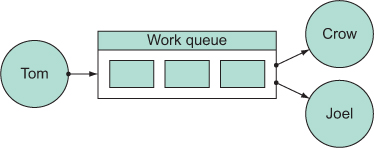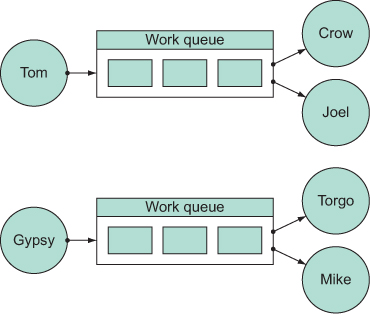Chapter 11. Parallelism
This chapter covers
- When to use futures
- When to use promises
- Parallel operations
- Introduction to reducer/fold
Typically, parallel tasks work toward an aggregate goal; and the result of one task doesn’t affect the behavior of any other parallel task, thus maintaining determinacy. Whereas in the previous chapter we stated that concurrency was about the design of a system, parallelism is about the execution model. Although concurrency and parallelism aren’t quite the same thing, some concurrent designs are parallelizable. Recall that in the previous chapter we showed an illustration of a concurrent work queue design featuring a producer and two consumer threads (see figure 11.1).
Figure 11.1. The concurrent design with an intermediate work queue from the previous chapter is potentially parallelizable.

In the figure, the independent threads Tom, Crow, and Joel operate independently. For the purposes of this section, assume that Tom, Crow, and Joel are all performing independent, concurrent operations. Yet depending on the type of data placed into the work queue, this design could be parallelized by duplicating it as shown in figure 11.2.
